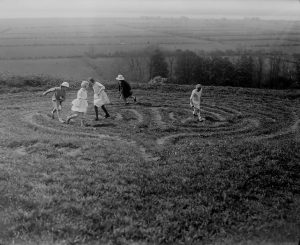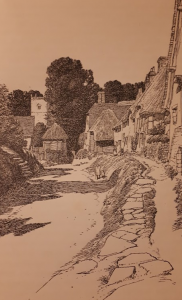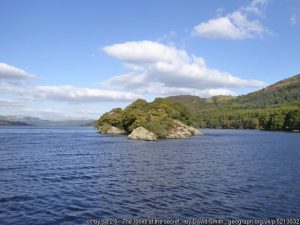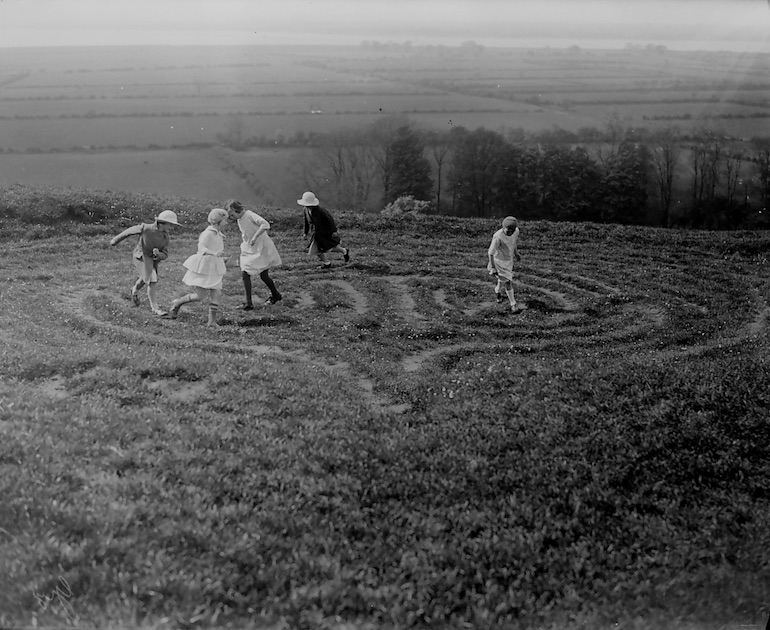By Jeremy Burchardt

Place-name (toponym) research has a long and distinguished tradition in English historical scholarship, associated with the work of luminaries such as Margaret Gelling, Harry Thorpe and the English Place Name Society. Admittedly, there is an even longer tradition of bogus place-name derivations – just the other morning I was reading J.E. Vincent’s Highways and Byways in Berkshire (1906), which strives assiduously to prove that East and West Hendred derive their names from the Celtic ‘Hendref’, meaning ‘a winter house in which the husbandmen house their herds and flocks’, despite the fact that it has a well-attested and far more plausible derivation from the Old English ‘henn’ (a hen) and ‘rith’ (a small stream). Partly no doubt to differentiate itself from the plethora of specious etymologies of this sort, for many decades academic place-name research maintained an austere focus on ‘authentic’, documented place names.

Yet naming is always a matter of social custom and praxis, and in recent years this distinction between ‘official’ and informal place naming has been questioned. Researchers have become increasingly interested in vernacular place names – the names people actually use to refer to places on a day-to-day basis, as opposed to the names recorded in maps, legal documents and the like. One of the most exciting areas this opens up is children’s place-naming practices, which seem hitherto almost entirely to have escaped scholarly attention. For the 2019/20 academic year (but delayed like so much else by the pandemic) the Museum of English Rural Life kindly awarded me a P.H. Ditchfield Fellowship to investigate this, with a particular focus, as befits the MERL’s remit, on rural toponyms.
Just like adults, children need names to refer to places that matter to them. Sometimes they use adult toponyms but there are many reasons why they may need, or choose, to invent their own. Firstly, they may simply not know the adult name for a particular place. Secondly, however, different sorts of place interest children than adults, and there may well be no adult names for some of these places. Research by geographers like Roger Hart, Harry Heft and Nicola Ross has demonstrated that children’s spaces are often minutely differentiated – Ross’s study of children’s journeys to school shows that apparently insignificant features like gaps in hedges, slopes and particular trees and bushes can be invested with meaning for children (Ross, 2007). Thirdly, children’s toponyms sometimes play a defensive role, serving to keep adults out of children-only spaces of the kind that David Sobel has explored in his illuminating study of dens, forts and special places (Sobel, 2002). At the same time, invented toponyms can facilitate play and strengthen friendship group identity through creating a shared frame of reference. There is a very well-known literary example of this – Arthur Ransome’s Swallows and Amazons, in which the Walker and Blackett children rename islands, hills, streams and promontories to convert a hitherto adult-dominated landscape into their own private play terrain. Literary toponyms are in general much better known than their real-life counterparts, and there has been some interesting research on this, especially in the context of cartography in children’s fiction (Bird, 2014).

It has also been argued, notably by Chris Philo, that in contrast to adults, children relate to space in less instrumental ways in which dreams and reveries play a larger part (Philo, 2003). This is certainly reflected in children’s toponyms in some interesting and surprising ways. The exotic geographical place names of Swallows and Amazons are matched or even exceeding by many real-life examples. Among the invented toponyms reported to me by members of the Andover History and Archaeology Society when I gave a talk there were ‘the Khyber Pass’, ‘Lake Titicaca’, ‘Popocatepetl’ and, rather more prosaically, ‘Cooper’s Dip’ – named after an advertisement for the well-known sheep dip powder that the children had misinterpreted as the name of the hollow where they had been playing!
One of the things that makes researching children’s toponyms so interesting but also so challenging is that this is almost exclusively an oral tradition, although there are occasional haphazard references in memoirs and autobiographies. Hence, in contrast to most areas of historical research, to find out about children’s toponyms we have to generate new data rather than simply study existing archival material. This is one of the main things I hope to achieve through the Ditchfield Fellowship. Thinking back to my own childhood, most of the toponyms I and my friends used were quite simple and descriptive – ‘Green Tin’ for the corrugated-iron fence at the end of our cul-de-sac, and ‘the jungle’ for our overgrown back garden, until we cleared it. Others were a bit more imaginative: ‘the South Pole’ was our name for the hut far out on the common at the end of our road, towards which we set out on ambitious toboggan expeditions when it snowed. But given that we know so little about children’s toponyms as yet, all examples, however prosaic and literal, are interesting. If you know of any, whether names that you used in your own childhood or that you have come across subsequently, it would be a valuable contribution to my research to let me know by filling in this form. Do feel free to comment below too if you wish. Thanks!
REFERENCES
H.S. Bird, Class, Leisure and National Identity in British Children’s Literature, 1918-1950, New York, 2014
Jeremy Burchardt, ‘Far away and close to home: children’s toponyms and imagined geographies, c.1870-c.1950’, Journal of Historical Geography 69 (2020), 68-79
C. Philo, ‘To go back up the side hill’: memories, imaginations and reveries of childhood, Children’s Geographies 1 (2003), 7-23
N.J. Ross, ‘My journey to school …’: foregrounding the meaning of school journeys and children’s engagements and interactions in their everyday localities, Children’s Geographies 5 (2007), 373-91
D. Sobel, Children’s Special Places: Exploring the Role of Forts, Dens, and Bush Houses in Middle Childhood, Detroit, 2002
J.E. Vincent, Highways and Byways in Berkshire, London, 1906
Web links and Twitter accounts
The English Place Name Society @The_EPNS
Institute for Name-Studies @NameStudies
Society for Name Studies in Britain and Ireland @SNSBI_official

